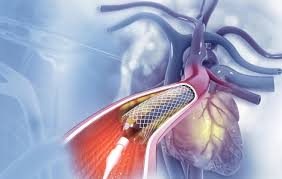Introduction to Interventional Cardiology
Interventional cardiology is a specialized branch of cardiology that focuses on diagnosing and treating cardiovascular diseases using minimally invasive techniques, primarily through catheter-based procedures. Unlike traditional open-heart surgeries, interventional cardiology provides patients with less risk, shorter recovery periods, and fewer complications. It plays a crucial role in treating conditions such as coronary artery disease (CAD), heart valve disorders, peripheral artery disease, and congenital heart defects. As per MRFR Analysis, the Interventional Cardiology Market was valued at 22.14 USD Billion in 2022 and is projected to grow from 23.18 USD Billion in 2023 to 35.0 USD Billion by 2032.
The field has seen tremendous advancements over the last few decades, leading to improved survival rates and quality of life for cardiac patients. With the use of real-time imaging and advanced catheter-based tools, cardiologists can access the heart through small incisions, often in the groin or wrist, to perform procedures that once required major surgery.
Key Procedures in Interventional Cardiology
One of the most common and life-saving procedures in interventional cardiology is angioplasty, or percutaneous coronary intervention (PCI). In this procedure, a balloon-tipped catheter is used to open up clogged arteries and restore blood flow to the heart. Often, a stent—a small mesh tube—is placed to keep the artery open long-term.
Atherectomy is another method used to remove plaque from the arteries, especially when it is too hard or calcified for a balloon to compress. In addition to coronary interventions, interventional cardiologists also treat structural heart diseases. For example, transcatheter aortic valve replacement (TAVR) is a groundbreaking technique used to replace a damaged heart valve without the need for open-heart surgery.
Other procedures include closure of atrial septal defects (ASD) or patent foramen ovale (PFO), mitral valve clip implantation, and left atrial appendage closure (LAAC) to reduce stroke risk in patients with atrial fibrillation.
Advantages of Interventional Cardiology
The key advantages of interventional cardiology lie in its minimally invasive nature. Most procedures are performed through small incisions using catheters, resulting in:
-
Reduced hospital stays
-
Faster recovery times
-
Lower risk of infection
-
Less pain and discomfort
-
Improved outcomes in high-risk patients who cannot undergo surgery
For elderly patients or those with multiple comorbidities, these minimally invasive approaches provide a much safer alternative to traditional cardiac surgeries.
Technological Innovations Driving Growth
Interventional cardiology has grown rapidly due to technological advancements in imaging, device design, and robotics. Real-time fluoroscopy, intravascular ultrasound (IVUS), and optical coherence tomography (OCT) allow physicians to visualize vessels from the inside and make precise decisions during procedures.
Innovations such as bioabsorbable stents, which dissolve after fulfilling their purpose, and drug-eluting balloons that release medication directly at the site of blockage, are setting new standards in patient care. Robotics and AI-driven technologies are also entering the space, enabling even greater precision and safety.
Browse In-depth Market Research Report ➤➤➤ https://www.marketresearchfuture.com/reports/interventional-cardiology-market-8735
Challenges and Considerations
Despite the tremendous benefits, interventional cardiology is not without challenges. Patient selection is critical, as not all heart conditions are suited for catheter-based treatments. Some patients may still require surgical interventions, especially in complex cases involving multiple blocked arteries or extensive structural damage.
Additionally, there are risks of complications such as bleeding, blood clots, or restenosis (re-narrowing of arteries). Continuous training, adherence to protocols, and the use of advanced imaging have helped mitigate many of these risks, but they remain important considerations.
Global Market and Demand Trends
The demand for interventional cardiology is rising globally, driven by the increasing prevalence of cardiovascular diseases. According to the World Health Organization (WHO), heart disease remains the leading cause of death worldwide, prompting healthcare systems to invest more in early diagnosis and less invasive treatments.
North America currently leads in market share due to advanced healthcare infrastructure, high adoption of technology, and a growing elderly population. However, Asia-Pacific is emerging as a fast-growing market owing to urbanization, lifestyle changes, and improving access to specialized cardiac care in countries like India and China.
Role of Interventional Cardiologists
Interventional cardiologists are highly trained professionals who undergo several years of additional education and hands-on training beyond medical school and general cardiology. Their role involves not only performing procedures but also interpreting diagnostic results, planning treatments, managing post-procedure care, and coordinating with a multidisciplinary team to ensure optimal outcomes.
They often collaborate with surgeons, radiologists, and primary care providers to tailor treatment plans based on each patient's unique risk profile and health status.
The Future of Interventional Cardiology
As cardiovascular technology continues to evolve, the future of interventional cardiology looks promising. Personalized medicine, remote monitoring, and wearable devices are expected to play an increasingly important role in detecting heart problems before they become severe. There is also a growing focus on preventive cardiology, emphasizing early lifestyle interventions and medical management to reduce the need for invasive procedures.
In the coming years, we can expect more biocompatible and intelligent implants, machine learning algorithms for diagnosis, and expanded use of hybrid operating rooms combining surgery and catheter-based techniques in a single setting. Furthermore, as regulatory pathways become more streamlined, innovation in this field is likely to accelerate.
Explore MRFR’s Related Ongoing Coverage In Healthcare Domain:
Hypnotherapy Market -
https://www.marketresearchfuture.com/reports/hypnotherapy-market-41140
Incontinence Devices and Ostomy Market -
https://www.marketresearchfuture.com/reports/incontinence-devices-ostomy-market-42921
Inferior Vena Cava IVC Filter Market -
https://www.marketresearchfuture.com/reports/inferior-vena-cava-ivc-filter-market-37251
Intragastric Balloon Market -
https://www.marketresearchfuture.com/reports/intragastric-balloon-market-41755
Intraoperative Radiation Therapy Market-
https://www.marketresearchfuture.com/reports/intraoperative-radiation-therapy-market-32731


